
Teofilus yang mulia, banyak orang telah berusaha menyusun suatu berita tentang peristiwa-peristiwa yang telah terjadi di antara kita, seperti yang disampaikan kepada kita oleh mereka, yang dari semula adalah saksi mata dan pelayan Firman. Karena itu, setelah aku menyelidiki segala peristiwa itu dengan seksama dari asal mulanya, aku mengambil keputusan untuk membukukannya dengan teratur bagimu, supaya engkau dapat mengetahui, bahwa segala sesuatu yang diajarkan kepadamu sungguh benar.(Lukas 1 : 1 - 4 ) (Kitab Suci Terjemahan Baru)
Dalam Da Vinci Code, Dan Brown menggunakan paparan dari injil Maria Magdalena dan Phillipus yang merupakan injil - injil Gnotis untuk rasionalitas penulisan bukunya. Kemudian dalam serial National Geographic juga disiarkan keberadaan injil Judas yang sensasional secara internasional sehingga mempertanyakan siapakah Yesus, apakah Yesus benar - benar bangkit dari mati, dan juga bagaimana hubungannya dengan Maria Magdalena. Dengan seolah berdasar data yang faktual historis mencengangkan banyak orang, terutama bila tidak memahami dengan benar sejarah Gereja, akan menimbulkan banyak pertanyaan. Syukur bila tidak sampai iman kepercayaan menjadi goyah. Para Scholar dan penafsir kitab suci tidak meragukan ketuaannya dengan test laboratorium yang menggunakan uji karbon ,C14; menunjukkan bahwa injil Yudas merupakan tulisan antara tahun 200 - 400 Masehi. Namun isi dan kebenarannya diragukan nilai kristianinya karena tokoh sentralnya bukanlah Yesus, Yesua hanya sebagai figuran dan bukan berasal dari komunitas kristiani. Buku - buku "injil" ini dapat dikelompokkan kedalam Gnostic Bibles yang dalam penulisannya berdasar logika dan pengetahuan yang terpengaruh alam pikiran Helenistis. Menurut Adolf Heuken , SJ dalam Spiritualitas Kristiani, Yayasan Cipta Loka Caraka, Jakarta, 2002 ; Helenisme adalah pandangan hidup yang umum yang timbul sesudah Iskandar Agung (+323 SM) menyatukan kebudayaan Yunani ( Hellas ) dengan budaya serta agama - agama Timur Tengah , termasuk Yudaisme. Pemikiran gnostik berdasarkan keyakinan bahwa ada dua dunia, yaitu dunia roh yang suci dan murni tempat Allah berada ; dan dunia dimana kita berada, yaitu dunia yang buruk dan jahat. Kedua dubia ini tidak saling berhubungan. Bila manusia ingin meloloskan kedalam dunia roh ini, saatnya adalah waktu kematian, ketika jiwa meninggalkan raga. Pemikiran gnostik adalah karena pengaruh Helenistik, sejak Plato, , kemudian Stoistic yang berdasarkan bahwa satu - satunya kebenaran dalam dunia dan manusia yang tinggal didalamnya adalah akal budi ( reason ) , kemudian karena syncretisme dengan agama - agama kuno dan juga aliran - aliran filsafat yang berkembang saat itu menjadi pemikiran - pemikiran yang melahirkan Gnostik yang mencari kebenaran berdasarkan pengetahuan sebagai dasar pemahaman tentang Tuhan dan Kristus. Logika adalah menjadi main straim dalam pemikiran penulis - penulis Gnostic Bibles.
Ada buku The Other Bible yang ditulis Willy B dari penerbit Harper Collin yang menganalisa tentang injil - injil tersebut :
.......Gathered here for the first time in one comprehensive volume are excerpted ancient holy texts from Judeo-Christian traditions that were excluded from the official canon of the Old and New Testaments. The Other Bible is a unique sourcebook of essential selections from Jewish Psudepigrapha, early Kabbalah, Haggadah, Midrash, Christian Apocrypha, and Gnostic scriptures. The Other Bible provides a rare opportunity to discover the poetic and narrative riches of this long-suppressed literature and experience firsthand its visionary discourses on the nature of God, humanity, the spiritual life, the world around us, and infinite worlds beyond this one.
Yang digambarkan oleh injil - injil ini seperti injil dari Maria Magdalena, Thomas, Filipus dsb yang disebut juga injil - injil apokrif ( jangan disamakan dengan deteuronika);
.....Diantaranya adalah apokrif sebagai berikut dibawah ini:
Apocrypha: The Gospel of Thomas
Apocrypha: Oxyrhynchus 1224 Gospel
Apocrypha: The Egerton Gospel
Apocrypha: The Gospel of Peter
Apocrypha: Secret Mark
Apocrypha: The Gospel of the Egyptians
Apocrypha: The Gospel of the Hebrews
Apocrypha: The Apocalypse of Peter
Apocrypha: The Secret Book of James
Apocrypha: The Preaching of Peter
Apocrypha: The Gospel of the Ebionites
Apocrypha: The Gospel of the Nazoreans
Apocrypha: The Oxyrhynchus 840 Gospel
Apocrypha: The Traditions of Matthias
Apocrypha: The Gospel of Mary
Apocrypha: The Dialogue of the Savior
Apocrypha: The Gospel of the Savior
Apocrypha: The Epistula Apostolorum
Apocrypha: The Infancy Gospel of James
Apocrypha: The Infancy Gospel of Thomas
Apocrypha: The Acts of Peter
Apocrypha: The Acts of John
Apocrypha: The Acts of Paul
Apocrypha: The Acts of Andrew
Apocrypha: The Acts of Peter and the Twelve
Apocrypha: The Book of Thomas the Contender
Apocrypha: The Acts of Thomas
Are they the real history of Jesus?
Are there secret writings about Jesus??
In 1945 a discovery was made in Upper Egypt, near the town of Nag Hammadi. Fifty-two copies of ancient writings, called the Gnostic gospels were found in 13 leather-bound papyrus codices (handwritten books). They were written in Coptic and belonged to a library in a monastery. A few Gnostic scholars have gone so far as to assert that these recently discovered writings are the authentic history of Jesus instead of the New Testament. But does their faith in these documents square with the historical evidence? Let’s take a deeper look to see if we can separate truth from fiction.
Secret "Knowers"
The Gnostic gospels are attributed to a group known as (big surprise here) the Gnostics. Their name comes from the Greek word gnosis, meaning “knowledge.” These people thought they had secret, special knowledge hidden from ordinary people.
As Christianity spread, the Gnostics mixed some doctrines and elements of Christianity into their beliefs, morphing Gnosticism into a counterfeit Christianity. Perhaps they did it to keep recruitment numbers up and make Jesus a poster child for their cause. However, for their system of thought to fit with Christianity, Jesus needed to be reinvented, stripped of both his humanity and his absolute deity.
In The Oxford History of Christianity John McManners wrote of the Gnostics’ mixture of Christian and mythical beliefs.
Gnosticism was (and still is) a theosophy with many ingredients. Occultism and oriental mysticism became fused with astrology, magic. … They collected sayings of Jesus shaped to fit their own interpretation (as in the Gospel of Thomas), and offered their adherents an alternative or rival form of Christianity.1
Early Critics
A mild strain of Gnostic philosophy was already growing in the first century just decades after the death of Jesus. The apostles, in their teaching and writings, went to great lengths to condemn these beliefs as being opposed to the truth of Jesus, to whom they were eyewitnesses. Check out, for example, what the apostle John wrote near the end of the first century:
Who is the great liar? The one who says that Jesus is not the Christ. Such people are antichrists, for they have denied the Father and the Son. (1 John 2:22, NIV).
Following the apostles’ teaching, the early church leaders unanimously condemned the Gnostics as a cult. Church father Irenaeus, writing 140 years before the Council of Nicaea, confirmed that the Gnostics were condemned by the church as heretics. He also rejected their “gospels.” But, referring to the four New Testament Gospels, he said, “It is not possible that the Gospels can be either more or fewer in number than they are.” 2
Christian theologian Origen wrote this in the early third century, more than a hundred years before Nicaea:
I know a certain gospel which is called “The Gospel according to Thomas” and a “Gospel according to Matthias,” and many others have we read—lest we should in any way be considered ignorant because of those who imagine they possess some knowledge if they are acquainted with these.
Nevertheless, among all these we have approved solely what the church has recognized, which is that only four gospels should be accepted.3
Mystery Authors
When it comes to the Gnostic gospels, just about every book carries the name of a New Testament character: the Gospel of Philip, the Gospel of Peter, the Gospel of Mary, and so on. But were they even written by their purported authors? Let’s take a look.
The Gnostic gospels are dated about 110 to 300 years after Christ, and no credible scholar believes any of them could have been written by their namesakes. In James M. Robinson’s comprehensive The Nag Hammadi Library, we learn that the Gnostic gospels were written by “largely unrelated and anonymous authors.”4
New Testament scholar Norman Geisler writes, “The Gnostic writings were not written by the apostles, but by men in the second century (and later) pretending to use apostolic authority to advance their own teachings. Today we call this fraud and forgery.”5
CONCLUSION :
The attempt to picture Gnosticism as a mighty movement of the human mind towards the noblest and highest truth, a movement in some way parallel to that of Christianity, has completely failed. It has been abandoned by recent unprejudiced scholars such as W. Bousset and O. Gruppe, and it is to be regretted that it should have been renewed by anEnglish writer, G.R.S. Mead, in "Fragments of a Faith Forgotten", an unscholarly and misleading work, which in English-speaking countries may retard the sober and true appreciation of Gnosticism as it was in historical fact.
As conclusion from catholic encyclopedia:
Gnosticism was not an advance, it was a retrogression. It was born amidst the last throes of expiring cults and civilizations in Western Asia and Egypt. Though hellenized, these countries remained Oriental and Semitic to the core. This Oriental spirit -- Attis of Asia Minor, Istar of Babylonia, Isis of Egypt, with the astrological and cosmogonic lore of the Asiatic world -- first sore beset by Ahuramazda in the East, and then overwhelmed by the Divine greatness of Jesus Christ in the West, called a truce by the fusion of both Parseeism and Christianity with itself. It tried to do for the East what Neo-Platonism tried to do for the West. During at least two centuries it was a real danger to Christianity, though not so great as some modern writers would make us believe, as if the merest breath might have changed the fortunes of Gnostic, as against orthodox, Christianity.
Endnotes
1 John McManners, ed., The Oxford History of Christianity (New York: Oxford University Press, 2002), 28.
2 Darrell L. Bock, Breaking the Da Vinci Code (Nashville: Nelson, 2004), 114.
3 Bock, 119-120.
4 Ibid.,13.
5 Norman Geisler and Ron Brooks, When Skeptics Ask (Grand Rapids, MI: Baker, 1998), 156.
Permission to reproduce this article: Publisher grants permission to reproduce this material without written approval, but only in its entirety and only for non-profit use.
TAMBAHAN INFORMASI DARI SEORANG PASTOR :
Dalam posting tentang "Pelintiran Ajaran - Gnostisisme" saya singgung bahwa di Amerika pun sudah ada Gereja Kristen Gnostik yang "mirip-mirip" Katolik dengan segala misa, imam-uskup, dan kanon Kitab Suci tersendiri. Dan iman mereka sangat berbeda dengan iman Gereja yang apostolik (sesuai pengajaran para rasul). Berikut saya kompilasikan beberapa pandangan Gereja Gnostik seperti terdapat dalam website mereka. Semoga informasi ini bisa menambah wawasan sekaligus membuat kita tidak mudah diombang-ambingkan oleh pelbagai angin pengajaran yang membingungkan (bdk. Ef 4:14). Dan semoga kita juga senantiasa waspada dan mau mengindahkan seruan St. Paulus, "Aku heran, bahwa kamu begitu lekas berbalik dari pada Dia, yang oleh kasih karunia Kristus telah memanggil kamu, dan mengikuti suatu injil lain, yang sebenarnya bukan injil. Hanya ada orang yang mengacaukan kamu dan yang bermaksud untuk memutarbalikkan Injil Kristus" (Gal 1:6-7).
Wassalam,
Rm. Didik Bagiyowinadi, Pr.
Kompilasi Pandangan Gereja Gnostik dari: www.gnostic-Church.org
1. Jesus versi Gnostic….
Jesus Christ, or Yeshua the Nazarene, a fully human man fully infused with the spirit of the living God, came into the world as a free gift of God’s love to bring us to an
understanding of our spiritual lives. Born just as any of us are, he was
simultaneously the full incarnation of divine spirit into the world, the
self-emptying of God’s eternal love into the life of humanity. He lived a real
human life, filled with all the joy, pain, emotions, suffering, and desires
that all men and women experience. He carried this human life through to its
ultimate conclusion, suffering real human death as a political dissident at the
hands of the Roman empire in Judea . After dying, however, he was brought forward to a new life in the spirit, and
the resurrected Christ lives on in our hearts and spirits, forever offering his
love as a bridge between ourselves and God. (Canon 10, "On
Christ")
2. Tidak mengakui dosa pribadi maka tidak Butuh penebusan…
For Gnostics, Christ was not a bloody "sacrifice" offered for human sin, since "sin," like "good" and "evil," is a product of cosmic dualities rather than a genuine metaphysical reality.
Rather, Christ's life and resurrection bridge the chasm between our lives as
conglomerate pleromic-cosmic beings and the divine "bathos" of God in the unadulterated light of the pleroma. We encounter Christ thus as both a teacher and as a gateway to our own human liberation, rather
than as some sort of bizarre human sacrifice offered to appease an angry
"god." Where Christ walked, we walk. As Christ lived, we live. As
Christ was raised forward to a new life in the spirit, we will be raised
forward to a new life in the spirit, if we seek to understand the same divine
nature that we share with him. He has laid forth the path that we are to follow
in our lives. (Canon 11, "On the Gnostic Christ")
3. Sophia, sang Dewi Kebijaksanaan yang diagungkan… Sophia, or Wisdom, known as the “Great Consort” of the Christ, is the personification of divine wisdom. She has been worshipped throughout much of human history; Mesopotamians knew her as Astarte, Queen of Heaven; Jewish mystics penned tributes to her as the manifestation of Wisdom; Greek mythology personified her in the characters of Athene, Aphrodite, and Artemis; Jesus described her as both a Holy Spirit and the Advocate of human beings in their quest for enlightenment; modern pagans recognize her as the Great Goddess, Mother of the universe. We embrace all these different aspects of her reality. She is the
supreme manifestation of the divine bathos and thus the depth of her
love, her beauty, her supreme gift of spiritual understanding can never be
fully uttered or comprehended. She is the source of all true gnosis and human
knowledge. (Canon 12, "On Sophia")
4. Mengubah Doa Bapa Kami dan Salam Maria
The Gnostic Lord's Prayer
Our Father and Mother God,
you are within us all,
and you make all things holy and united,
as you are holy and united, one God living and true.
Your Kingdom come,
your will be done,
which is love to all that lives in the heavens and on the earth.
Give us this day our daily bread,
and let us give our daily bread to those who have none;
and heal our broken spirits,
as we heal and forgive others.
And lead us, through the darkness of your mystical love,
to the light of the pleroma,
Amen.
The
Hail Sophia
Hail Sophia, Lady of Light,
Mystical Lover of my spirit.
Blessed are you, Woman of Wisdom,
and blessed are the gifts you bestow on us your children.
Holy Sophia, goddess who leads to
the One God,
fill me with your emptiness,
and darken my spirit with your light,
Amen.
5. Setuju dengan pernikahan homoseksual ….
Sexual Orientation Furthermore, the Church must recognize that almost every human being will, either at some point or on a continuing basis, experience varieties of bisexual attraction. Heterosexuality, homosexuality, bisexuality, and trans-gendered sexualities are all healthy, beautiful, and beloved in the sight of God to the extent that they lead us to healthy sexual and emotional relationships and advance our progress in the spirit of love and peace.
It should go without saying that homosexual couples are entitled to all the rights of heterosexual couples in the family of the Church, including but not limited to the
recognition of their marriages by the sacraments of the Church. Hatred,
bigotry, or any kind of discrimination based on sexual orientation is an
abomination before God and has no place among the children of Light. As a part
of this commitment to the spiritual equality of all human beings, the Church is
also dedicated to supporting campaigns for GLBT rights in the civil sphere.
6. Percaya pada reinkarnasi ….
Some of us believe in
metempsychosis, or reincarnation of those who are not able to achieve
gnosis within a single lifetime. This is an unresolved issue within the Gnostic
tradition, but we are all able to share the belief that, whether reincarnation
takes place or not, we are able to achieve gnosis within a single lifetime, for
the kingdom, as Christ taught, is both inside us and all around us. (Canon
20, "On Metempsychosis or Reincarnation")
7. Anti Dogmatic Truth ……
Finally, we believe that Gnosticism has always been a religion of tremendous internal diversity and this is in fact one of its strengths. We are not a dogmatic faith, but a faith geared towards experiencing the love of God, seeking spiritual knowledge
(gnosis), and making this love and this knowledge manifest in our world. We
have room to disagree on many specific doctrinal issues within the broad
framework that unites us as Gnostics. Because of this, we follow the guiding
principle, "In essential things unity, in non-essential things liberty, in
all things charity." Gnosticism is not about forcing people to believe
certain "doctrines" or "truths," but rather about seeking
that great source of Truth, the pleroma, through the grace of our great guides
Christ and Sophia. We are absolutely dedicated to intellectual and spiritual
freedom -- and open debate -- within the context of our faith. (Canon
21, "On Diversity and Spiritual Liberty")




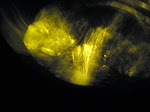


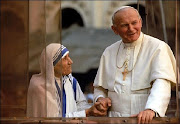

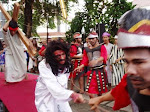



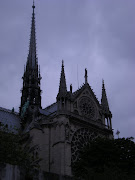

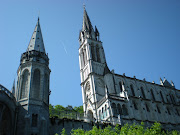
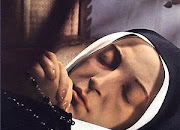

.jpg)

No comments:
Post a Comment